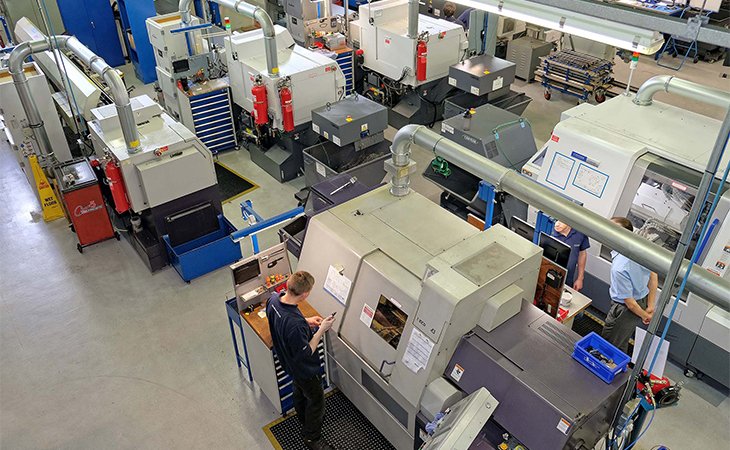Overview of Vietnamese Manufacturing Industry
The Vietnamese manufacturing industry has experienced exponential growth over the past few decades, transforming from a nascent sector to a global production powerhouse. With significant milestones marking its trajectory, Vietnam’s journey in manufacturing began earnestly in the 1990s. The government’s reform policies, commonly known as “Đổi Mới,” played a crucial role in fostering an environment conducive to industrial growth.
Vietnam’s strategic geographical location in Southeast Asia gives it an edge as a prime manufacturing hub. Its proximity to major global markets such as China, Japan, and South Korea facilitates seamless supply chain integrations and efficient logistics. Additionally, Vietnam boasts a young, skilled workforce, with a burgeoning pool of engineers and technicians trained in advanced manufacturing techniques. The availability of competitive labor costs further enhances Vietnam’s attractiveness to multinational companies.
Favorable economic policies have been instrumental in bolstering Vietnam’s manufacturing sector. The Vietnamese government has implemented a series of initiatives to attract foreign direct investment (FDI). Special Economic Zones (SEZs) and Industrial Parks (IPs) offer tax incentives, reduced tariffs, and simplified regulatory procedures to attract and retain investors. This strategic focus has led to significant inflows of FDI, particularly in high-tech and precision manufacturing segments.
Within the broad spectrum of Vietnam’s manufacturing industry, several key sectors stand out. These include electronics, textiles, and automotive components. However, the precision machine components segment deserves special recognition. This niche area has seen accelerated development, driven by the demand for high-quality, intricate machinery required in industries such as aerospace, medical devices, and advanced electronics
Statistically, Vietnam has consistently outperformed many of its regional competitors. According to the General Statistics Office of Vietnam, the country’s industrial production index has grown by an average of 9-10% annually over the last decade. Comparatively, Vietnam’s labor costs are lower than those in China and Thailand, making it a cost-effective destination for manufacturing operations.
Global trade agreements, such as the Comprehensive and Progressive Agreement for Trans-Pacific Partnership (CPTPP) and the European Union-Vietnam Free Trade Agreement (EVFTA), have further cemented Vietnam’s position in the global manufacturing landscape. These agreements help reduce tariffs, enhance market access, and provide a framework for robust intellectual property protections, benefitting precision machine components and other high-value manufacturing sectors.
The Role and Quality of Precision Machine Components
Precision machine components are critical elements in the intricate mechanisms of numerous industries, including automotive, aerospace, and electronics. These components, known for their meticulous design and exacting tolerances, are central to performance, safety, and durability in their respective applications. Boasting unparalleled accuracy, they are engineered to meet exact specifications, ensuring seamless integration and operation.
In the context of Vietnamese manufacturing, the production of these precision machinery parts has witnessed significant advancements. Leveraging state-of-the-art technology and rigorous quality control processes, Vietnamese manufacturers have consistently produced components that meet and often exceed international standards. This commitment to quality is underscored by various certifications and adherence to global benchmarks, such as ISO 9001 and AS9100, which highlight the sophistication and reliability of their production methods.
The automotive industry, for instance, relies heavily on these precision components for engines, transmissions, and safety systems. Vietnamese suppliers have established themselves as dependable partners by providing consistent quality and integrating cutting-edge technologies like Computer Numerical Control (CNC) machining and automated inspection systems. Similarly, in the aerospace sector, the demand for high-precision parts is critical, and Vietnamese manufacturers have risen to the challenge, producing components that endure extreme conditions and stringent regulatory scrutiny.
Vietnamese precision component manufacturers have also forged robust collaborations with international clients, showcasing their capabilities on a global stage. Case studies of successful partnerships reveal a trend of long-term engagement and trust, often resulting in repeated business and expanded market access. These partnerships are testament to the reliability and excellence embedded in the Vietnamese approach to manufacturing.
Sustainability is another cornerstone that differentiates Vietnamese manufacturers. By incorporating eco-friendly practices, such as reducing waste through efficient material usage and adopting green technologies, they not only meet environmental regulations but also appeal to an increasing global emphasis on sustainable production. Innovations in recycling and energy-efficient manufacturing further strengthen their position as leaders in responsible production.



